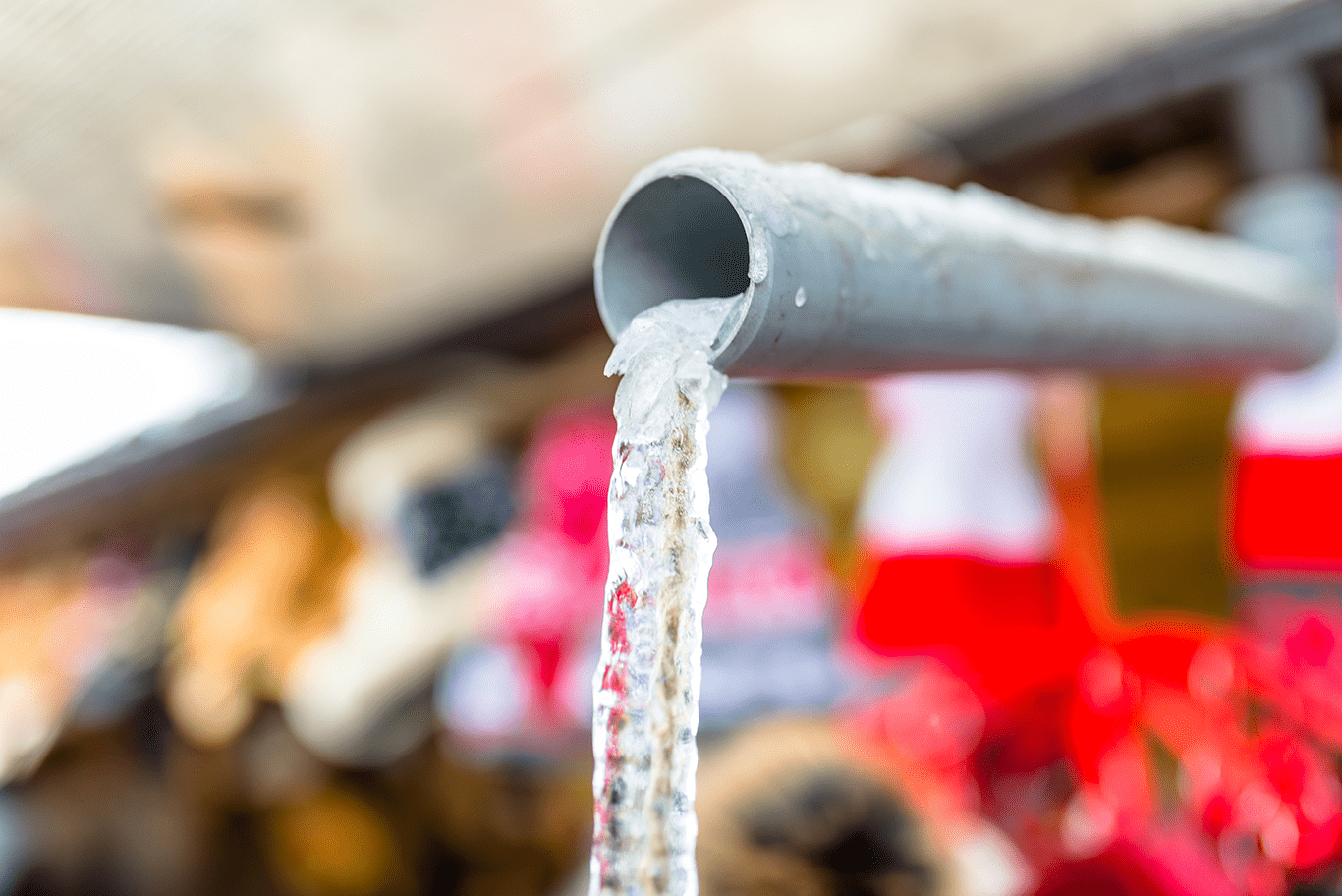As temperatures start to drop, it’s important to take some preventative measures against pipe freezing. If you do experience frozen pipes, there are a few steps you can take to thaw them out safely. With these tips in mind, you can help keep your pipes from freezing – and avoid costly water damage – this winter!
Pipes frozen in extremely cold weather, also known as frozen pipes, can lead to costly water damage when they break. When water inside a pipe freezes, the frozen water expands and builds up pressure within the pipe walls. Over time, this pressure can cause the frozen pipes to burst, resulting in flooded homes and businesses. Taking preventative measures such as insulating exposed pipes in unheated garages and attics and getting a professional inspection of vulnerable plumbing systems by qualified professionals during the colder months of the year can help you avoid frozen pipes.
Preventative Measures Against Pipe Freezing
During the cold season, prevent frozen pipes by taking preventative measures such as keeping the garage door closed and leaving faucets running. This will prevent cold air from entering your home through the garage, and allow for a small amount of movement throughout the pipes. Additionally, maintaining a steady thermostat can help prevent pipes from freezing due to sudden temperature fluctuations in the house. Taking these steps ensures that your pipes are safe during periods of colder weather and limits potential damage caused by frozen pipes.
What to Do if You Have Frozen Pipes
When faced with frozen pipes, thawing them should be done with caution. One method is to use a hair dryer to warm the pipes, starting from the faucet and working back toward the frozen area. Do not thaw suddenly using hot water, as this can cause significant damage. Gradually thaw out the area using lukewarm water before turning up the heat. Another option is to wrap an electric heating pad around them for gradual thawing, although always take care to use heating pads with caution and never leave them unattended. Thawing frozen pipes requires patience and care but if done correctly can help avoid costly repairs or replacements.
Long-Term Solutions for Frozen Pipes
If you’re looking for long-term solutions to prevent your pipes from freezing, there are a few things you can do. One is to insulate any vulnerable areas near your pipes, such as crawl spaces or attics. Another is to install supplemental heat in areas where the temperature tends to drop below freezing. By taking these steps, you can help ensure that your pipes are protected from freezing – even in the coldest of weather.
Prevention is the best form of protection when it comes to avoiding freeze damage and prevent frozen pipes in the long term. Solutions such as insulating vulnerable areas, adding supplemental heat and checking weather forecasts can help protect homes from extreme temperatures. Insulating exposed surfaces, including walls, windows, and ceilings can prevent cold air from entering the house. Indoor temperatures need to be regularly monitored, as well as keeping known pipe problems up to date with repairs or replacements where needed. Supplemental heating methods such as portable heaters or electric tape can also help prevent frozen pipes in extreme conditions. Checking reliable weather forecast updates will help prepare for colder temperatures, allowing for additional preventative measures to be taken ahead of time. Taking these proactive preventative steps can give occupants peace of mind that their pipes are insulated and shielded against unpredictable winter conditions.
With these tips in mind, you can help keep your pipes from freezing this winter. Frozen pipes can be a major inconvenience and can cause costly water damage if they’re not thawed out properly. By taking some preventative measures and knowing what to do if you have frozen pipes, you can rest assured that your home will be safe and sound all winter long.

